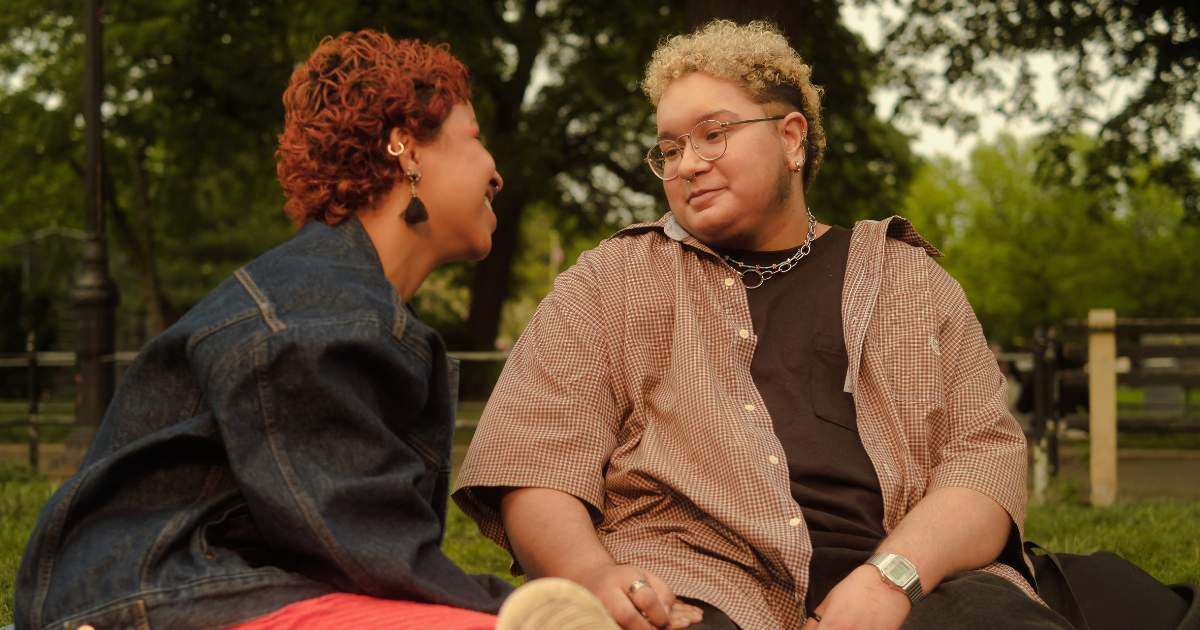Safe And Affirming Online Dating For Trans Folks

Note: This blog post is written with support from Edward Reese, Community Manager and Gender & Sexuality Expert at Taimi, the LGBTQIA+ dating app.
It isn’t enough to say that trans people deserve to be safe in online dating—that’s the bare minimum. As a trans person, you deserve to find joy, connection, and affirming experiences in the dating world.
Online platforms can provide a space to meet like-minded people and build relationships, but they can come with unique challenges. From navigating safety concerns to setting boundaries and recognizing red flags, it’s important to approach trans dating with both excitement and caution.
Here are some tips to protect yourself while finding people who will love and respect you.
Finding Your People in Queer-Positive Spaces
Trans people can be gay, straight, bisexual, ace, and more. You can find dating options in many places, but many trans folks feel most comfortable in LGBT+-focused dating spaces. These platforms often provide:
- A higher chance of meeting people who are trans-affirming.
- Stronger policies against harassment, reducing exposure to harmful interactions.
- More trans-friendly features, such as gender-inclusive search options, pronouns, and community guidelines that protect users.
If you’re looking for trans-for-trans (T4T) connections, queer dating apps like Taimi have larger pools of trans users, making it easier to find matches who understand your experience.
Disclosing Your Identity
Deciding if, when, and how to disclose your trans identity while dating is a deeply personal choice. There’s no single “right” way, only what feels safest and most comfortable for you.
Some people choose to be upfront in their dating profiles to filter out those who aren’t affirming. Others prefer to wait and share once they’ve built a sense of trust with the person. Some don’t feel the need to disclose at all unless a relationship is becoming serious.
All of these approaches are valid. Choosing when and how to disclose your identity does not make you dishonest—it makes you intentional about your safety and comfort.
If you’re unsure about someone’s reaction, take your time. Pay attention to how they talk about gender and inclusivity. Do they use respectful language? Are they engaged in conversations that suggest they are affirming? Trust your instincts. You are never obligated to disclose until you feel ready.
Taking Your Time Before Moving Communication to Other Platforms
It’s normal for online interactions to transition to texting, phone calls, social media, or meetings—but it’s important to move at your own pace. If someone is pressuring you to escalate communication before you’re ready, that’s a red flag.
Here are some ways to protect yourself:
- Stay within the dating app until you feel secure. Most reputable platforms like Taimi have safety features like profile verification and in-app messaging.
- Avoid pressure. If someone is pushing you to move to another platform or meet in person before you’re comfortable, take that as a warning sign.
- Consider a video chat first. Before meeting in person, a video call can help confirm that the person is who they claim to be and give you a better sense of their energy and intentions.
Setting Boundaries with Private Images
Requests for intimate photos are common in online dating, but they should never make you feel pressured to share anything you’re not comfortable with.
Here’s some red flags to watch out for:
- They ask for explicit photos early in the conversation.
- They persist after you’ve already said no.
- They try to guilt, pressure, or manipulate you into sending images.
If you do decide to share photos:
- Avoid showing your face, identifiable tattoos, or anything that could be used to track you.
- Use disappearing images or encrypted apps for extra privacy.
There’s nothing wrong with engaging in digital intimacy if that’s something you want but always do it on your terms. If a request makes you uncomfortable, it’s okay to say no and block the profile if they persist.
Recognizing Fetishization
Not everyone who expresses interest in you has good intentions. Some people may be more focused on your trans identity than on you as a person, while others may not be who they claim to be at all.
Watch out for these signs:
- They are overly fixated on your transition, body, surgeries, and aspects of your gender identity rather than who you are as a person.
- They ask invasive or inappropriate questions and are dismissive when you show that you’re uncomfortable.
- They make comments that objectify or exoticize trans identities.
- Their stories don’t add up. Pay attention to inconsistencies in what they say about themselves or their life.
Trust your gut! If something feels off, it probably is. You deserve to be seen, valued, and respected as a whole person.
Doing a Social Media Check
If you start talking outside of the dating app, take a moment to look at their social media presence. A person’s posts, likes, and interactions can give insight into their values and attitudes.
Things to consider:
- Do they follow anti-trans accounts or engage in harmful rhetoric?
- Do they have trans and queer friends in their circles?
- How do they talk about marginalized communities? Are they respectful and affirming?
You’re not just dating the version of them you see on an app, you’re dating their full self. If something doesn’t sit right with you, trust that instinct.
Planning a Safe First Meeting
Meeting someone for the first time can be exciting, but it’s always smart to take precautions to protect yourself.
- Pick a Safe Location: Choose a public place with good lighting and plenty of people around. Coffee shops, casual restaurants, or community spaces can be great options.
- Let Someone Know: Share your plans with a trusted friend like where you’re going, who you’re meeting, and what time you expect to check-in. Send them a photo of the person you’re meeting.
- Use Live Location Sharing: Many phones have location-sharing features that allow a friend to track your whereabouts during the date.
- Have an Exit Plan: Whether it’s driving yourself, knowing nearby transportation options, or having a friend available to call, make sure you can leave easily if you need to.
If you ever feel uncomfortable during a date, don’t hesitate to excuse yourself and leave. Many places train their staff to assist customers who feel unsafe.
Embracing the Possibilities of Online Dating
Not every interaction will be positive—unfortunately, creeps exist everywhere. But that shouldn’t stop you from seeking joy and meaningful connections.
By taking steps to protect yourself, setting clear boundaries, and prioritizing your safety, you can create dating experiences that feel affirming and aligned with what you deserve.
You are worthy of love, respect, and happiness in dating. The right people will see you, value you, and celebrate you for exactly who you are.
Stay safe, trust yourself, and happy dating!

Written by Point of Pride
Point of Pride provides financial aid and direct support to trans folks in need of health and wellness care.


